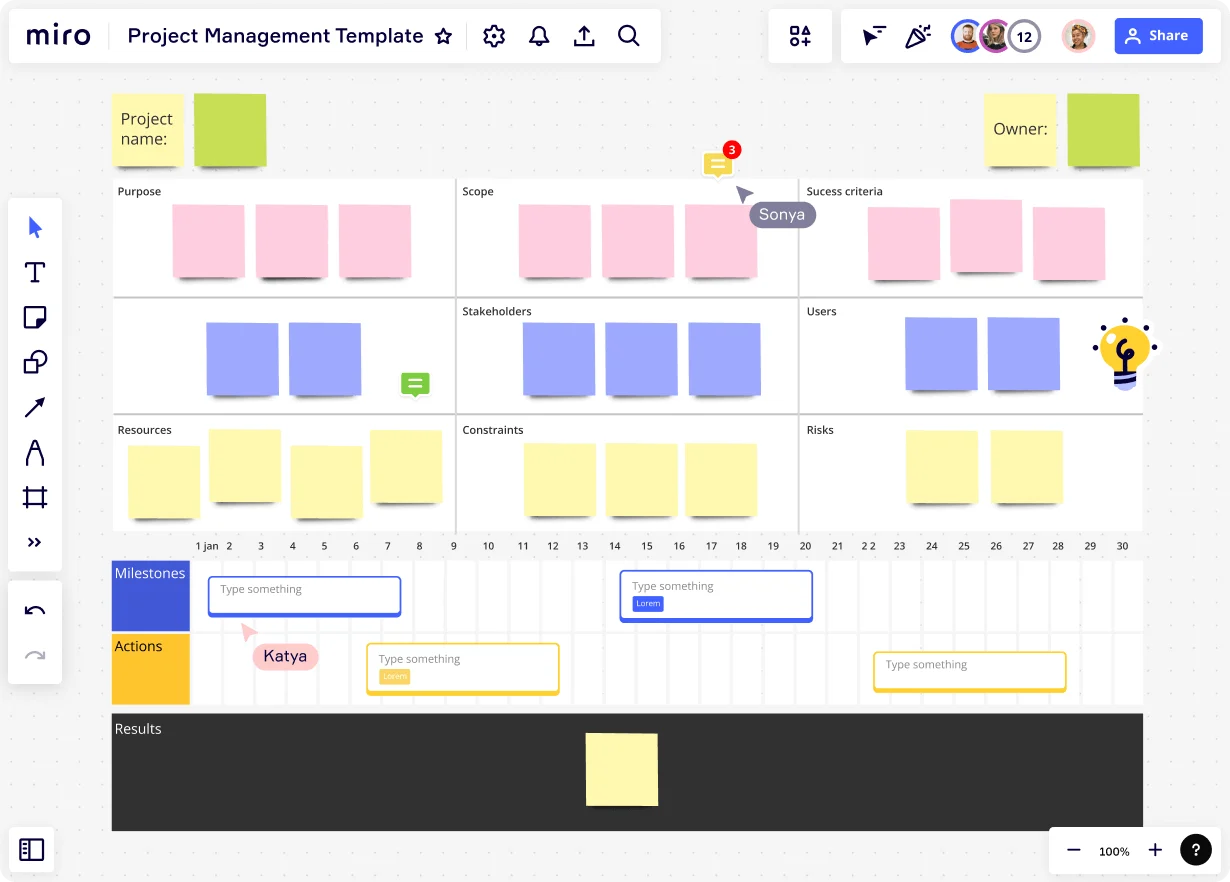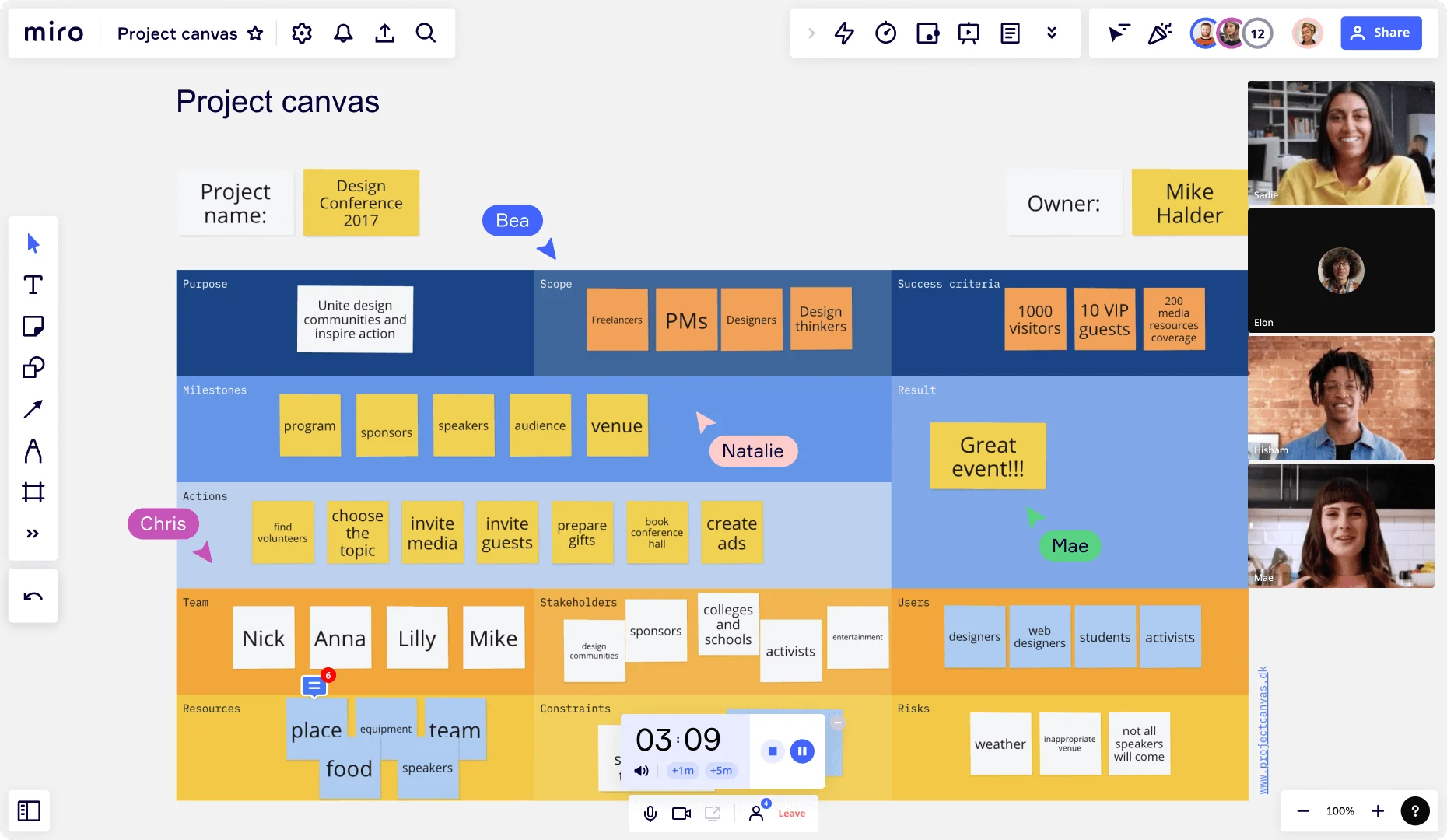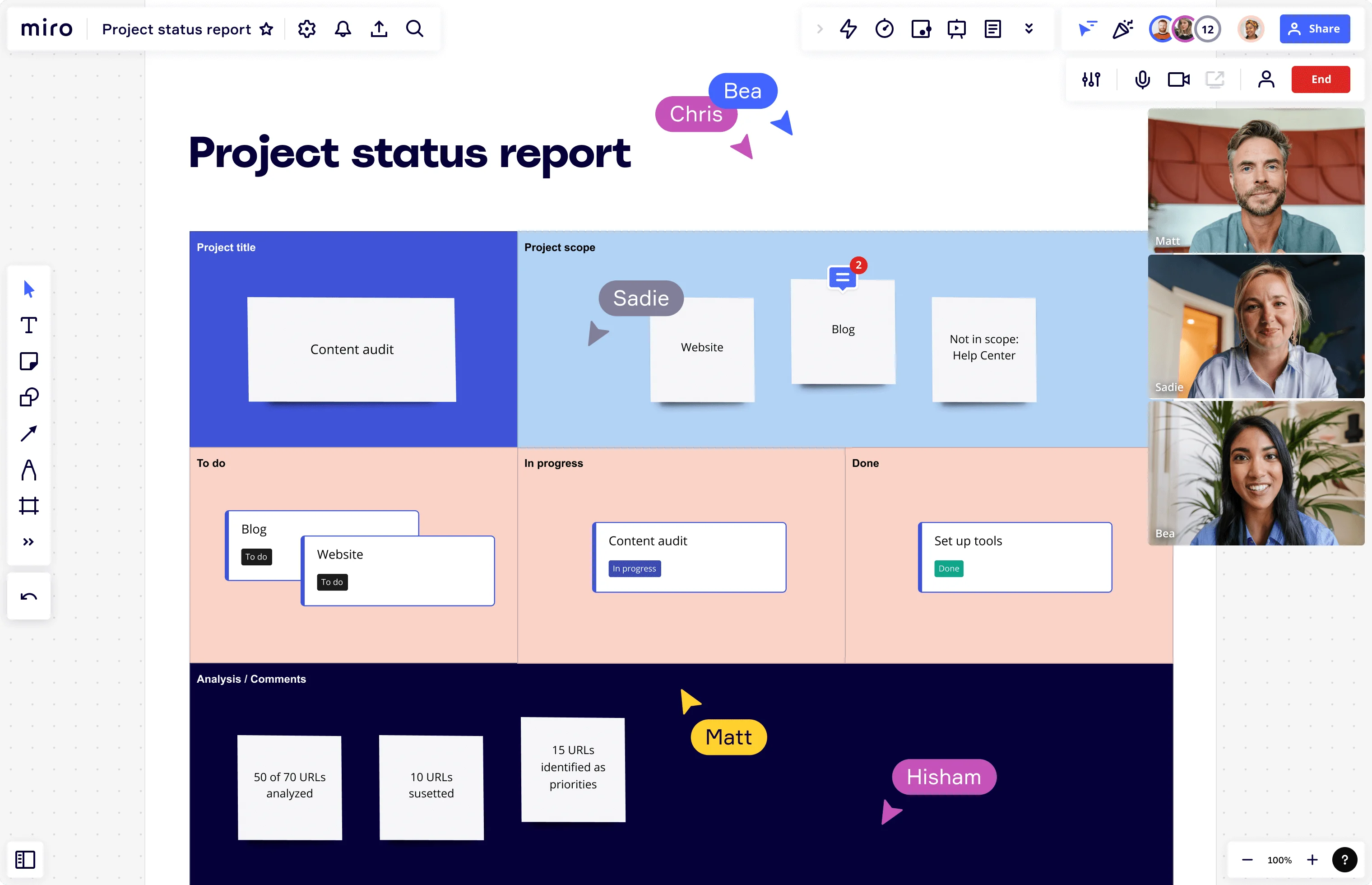
How to write a project scope

Understanding the basics of project scope
A project scope refers to the boundaries and extent of a project, outlining the specific objectives, deliverables, constraints, and assumptions that define its parameters. A key tool for project management, it sets the foundation for project planning and helps in managing expectations and ensuring success. The purpose of defining project scope is to establish a clear understanding of what will be included in the project and what will be excluded, providing a roadmap for project execution.
Key components of a project scope statement
Project objectives and goals: This section outlines the intended outcomes of the project. It describes the purpose of the project, what it aims to achieve, and the expected benefits.
Deliverables and milestones: Here, the tangible outputs and intermediate checkpoints of the project are defined. Deliverables are specific products, services, or results that will be produced during the project, while milestones mark significant stages or events in the project timeline.
Project boundaries and constraints: This component clarifies the limits and restrictions within which the project will operate. It includes factors such as budget, resources, time, and organizational policies that may impact the project's execution.
Assumptions and dependencies: This section outlines any assumptions made during the project planning phase and identifies external factors or dependencies that could influence the project's success. It helps in managing risks and dependencies effectively.

Preparing to write a project scope
Filling out a project scope template is a good starting point to guide you through everything you’ll need to prepare and include in the final project scope. Each project is different and will have different requirements, but there are some fundamental steps to help steer your project towards success.
Conduct initial project research
Before writing the project scope, it is crucial to conduct thorough research. This involves gathering information about the project's purpose, objectives, potential stakeholders, and any existing documentation or relevant data. Research provides the necessary foundation for a comprehensive and accurate scope statement.
Identify stakeholders and their expectations
Identifying stakeholders is essential for understanding who will be impacted by the project and what their expectations are. Stakeholders can include project sponsors, clients, end-users, team members, and other individuals or groups with a vested interest in the project. By understanding their needs and expectations, the project scope can be tailored to address their requirements effectively.
These stakeholder map templates can help you visualize everyone involved, and the RACI matrix templates can outline who is responsible for what.
Define project requirements
Defining project requirements involves identifying the specific features, functions, and characteristics that the project must deliver. This includes both functional requirements (what the project needs to accomplish) and non-functional requirements (constraints, performance criteria, etc.). Clear requirements provide a solid basis for project planning and decision-making.
Conduct a feasibility study
A feasibility study assesses the viability of the project by evaluating its technical, economic, and organizational feasibility. This analysis helps determine if the project is achievable within the given constraints, such as time, budget, and available resources. The findings of the feasibility study inform the project scope and its boundaries.
Set project boundaries and constraints
Establishing project boundaries involves defining the limitations and constraints within which the project will operate. These constraints can include budgetary limits, time restrictions, resource availability, technological restrictions, and any other factors that may impact the project's execution. By setting clear boundaries, the project scope can be effectively managed and controlled.
Structuring a project scope statement
A project scope statement should be clear, concise, and easily understood by all stakeholders. It should provide a high-level overview of the project and its objectives without unnecessary jargon or technical details. The scope statement should serve as a reference point throughout the project lifecycle.
Include SMART objectives
SMART objectives are Specific, Measurable, Achievable, Relevant, and Time-bound. Incorporating SMART objectives in the project scope statement ensures that the project goals are well-defined, measurable, realistic, and aligned with the project's purpose. SMART objectives provide clarity and facilitate effective project management.
Define measurable deliverables
Clearly defining measurable deliverables helps in evaluating project progress and success. Deliverables should be described in specific terms, allowing stakeholders to assess whether they have been successfully achieved. Measurable deliverables provide a basis for monitoring and controlling project outcomes.
Outline project timelines and milestones
Create timelines and milestones to establish the project's temporal structure. Timelines outline the expected start and end dates for the project, while milestones mark significant stages, events, or deliverables. Clear timeline and milestone definitions enable effective scheduling, progress tracking, and communication with stakeholders.
Address project risks and assumptions
Including project risks and assumptions in the scope statement ensures that potential challenges and uncertainties are considered upfront. Risks are potential events or circumstances that may have a negative impact on the project, while assumptions are factors that are believed to be true but are not yet proven. Addressing risks and assumptions in the scope statement allows for appropriate risk management strategies and informed decision-making.
Tips for writing an effective project scope
Follow the tips below to ensure your project scope is clear to everyone involved.
Use clear and specific language
When writing the project scope, it is important to use clear and specific language to avoid misunderstandings. Ambiguity can lead to misinterpretations and misalignment among stakeholders. Clearly defining terms and avoiding vague or open-ended statements promotes a shared understanding of the project scope.
Avoid ambiguity and scope creep
Ambiguity in the project scope can result in scope creep, which refers to uncontrolled changes or additions to the project's objectives or deliverables. Clearly defining the scope boundaries and constraints helps prevent scope creep and ensures that the project remains focused on its original goals.
Involve key stakeholders in the process
Engaging key stakeholders throughout the project scope development process promotes a sense of ownership and ensures that their perspectives and expectations are considered. Collaborative involvement fosters buy-in, reduces potential conflicts, and leads to a more accurate and comprehensive project scope.
Seek feedback and revisions
Seeking feedback from relevant stakeholders helps identify any gaps, errors, or omissions in the project scope. Reviewing the scope statement with the project team and other stakeholders allows for revisions and improvements to be made, increasing the accuracy and effectiveness of the scope document.
Keep the scope document updated throughout the project
The project scope is not a static document; it should be reviewed and updated as the project progresses. Changes in requirements, constraints, or assumptions may necessitate revisions to the scope. Keeping the scope document up to date ensures that all stakeholders have access to the latest information and reduces the risk of misalignment.

Common mistakes to avoid
A well-crafted project scope takes time and intention to prepare. Here are som common mistakes to bear in mind, so you can set your project off on the right food.
Overlooking key project requirements
One common mistake is overlooking important project requirements during the scope definition phase. Failure to identify and include crucial requirements may lead to incomplete or inadequate project deliverables. Thorough requirements analysis and stakeholder engagement help mitigate this risk.
Failing to involve stakeholders early on
Delaying stakeholder involvement in the project scope development process can result in misalignment and conflict later on. Engaging stakeholders from the beginning allows for their perspectives, expectations, and requirements to be considered, reducing the likelihood of misunderstandings or disagreements.
Allowing scope creep
Scope creep occurs when project boundaries are expanded without proper control or approval. Failing to manage scope changes effectively can lead to increased costs, delays, and decreased project success. Establishing a change control process and closely monitoring project changes help prevent scope creep.
Neglecting to review and update the project scope
A project scope that is not regularly reviewed and updated can become outdated or irrelevant. Changes in project requirements, constraints, or external factors may render the existing scope inadequate. Continuously reviewing and updating the project scope ensures its accuracy and alignment with project objectives.
By following these guidelines and avoiding common mistakes, project managers can develop effective and well-defined project scopes that contribute to successful project outcomes.
Use Miro to create a project scope
Miro is an excellent project management tool for creating a project scope, as it offers a collaborative and visual platform for teams to brainstorm, organize, and define project parameters. Easily capture and structure project objectives, deliverables, constraints, and assumptions all in one place, and invite project members to collaborate in real-time, ensuring everyone's input is captured and integrated into the scope document. Sign up for free to get started!